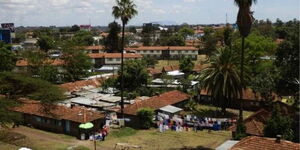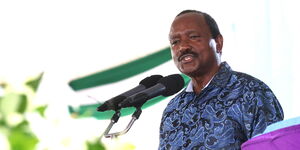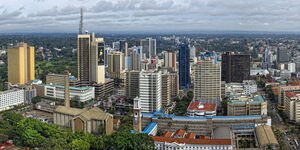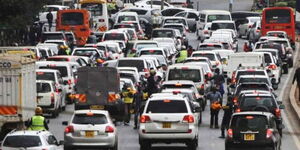Recent reports of deforestation efforts at Kenya’s Karura Forest in Nairobi have divided the public, government, and key conservationists on who exactly is behind the cutting down of trees in the natural habitat.
On 18 November, Friends of Karura Forest (FKF), a conservation outfit dedicated to preserving the forest, explained that the cutting down of trees was part of the forest’s restoration efforts. They noted that the restoration was being conducted in conjunction with the Kenya Forest Service (KFS) and involved the selective cutting of trees.
FKF added that the restoration was taking place after a logging ban in 2018 caused a six-year delay. However, the government continues to face mounting pressure from environmental activists over its decision to slice pieces of the forest land.
The government also recently came out to deny reports that it was slicing about 51 hectares of land.
In August this year, Kenya Forest Service(KFS) permitted the Kenya National Highways Authority to use 51 hectares of forest land as a wayleave for the dualling of Kiambu Road. This led to an uproar among stakeholders and Kenyans on what was exactly transpiring inside the forest.
Conservationists led by Isaac Kalua on Tuesday, December 17, in a statement gave the government key conservation strategies that can be used to avoid the environmental degradation that the deforestation to give wayleave has caused.
Kalua urged the government to optimise existing infrastructure by expanding lanes only in non-sensitive areas to minimise habitat disturbance.
The government has also been urged to introduce High-Occupancy Vehicle (HOV) and Bus Rapid Transit (BRT) lanes to improve traffic efficiency without large-scale expansions that would destroy the forest cover.
KFS and KeNHA were also urged to work together to promote a multimodal Integrated Transport System. This should include the establishment of park-and-ride facilities to encourage public transit use.
Consequently, the government has been urged to enhance public transport by expanding bus, metro, and rail networks to provide sustainable alternatives to road travel.
Additionally, the government has been advised to leverage smart technologies to help implement vehicle-to-infrastructure systems for real-time communication with vehicles to optimise traffic flow and minimise delays.
According to Kalua, had the government employed these strategies, the uproar over slicing the forest for road construction would not have been witnessed.
“Had KeNHA considered these strategies with sincerity and embraced their role as stewards of the environment with the fear of God, the need to encroach on Karura Forest would not have arisen. Development must align with conservation imperatives, ensuring infrastructure growth does not come at the cost of our ecological treasures,” Kalua stated in a statement.
“Karura Forest stands as a beacon of Nairobi’s environmental resilience, and its preservation is non-negotiable. Decision-makers must adopt innovative, sustainable approaches to infrastructure development that safeguard the delicate balance between progress and environmental conservation,” he added.












